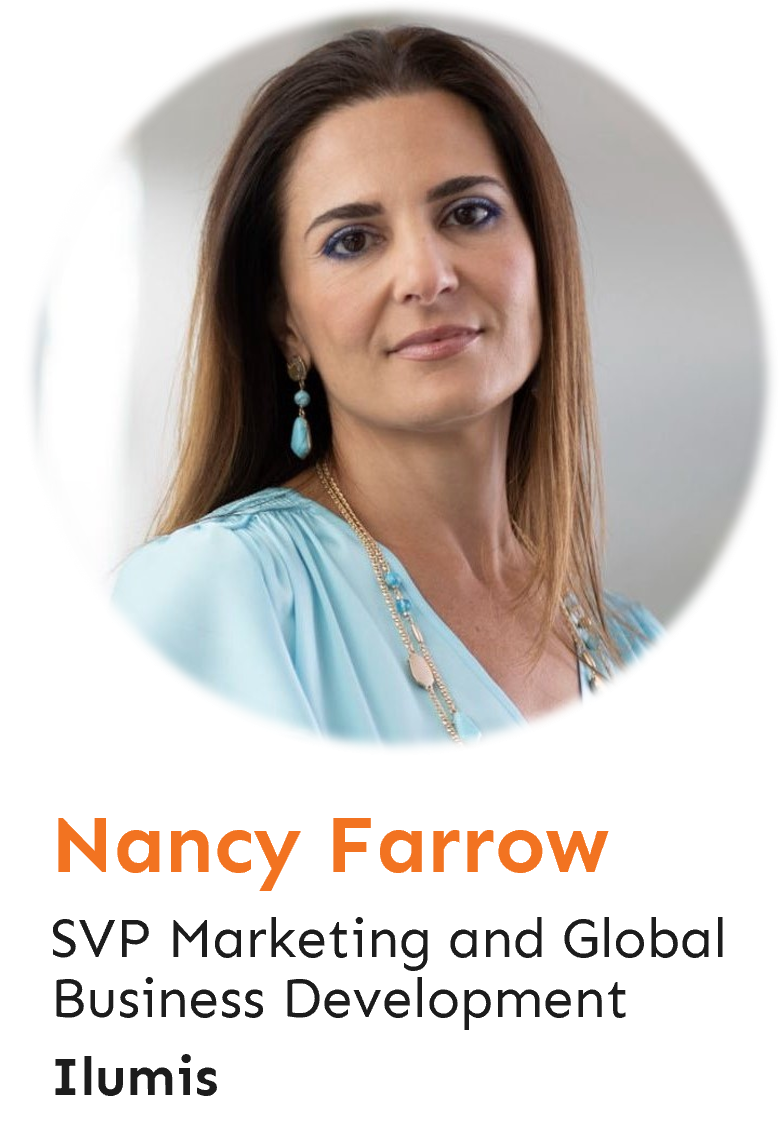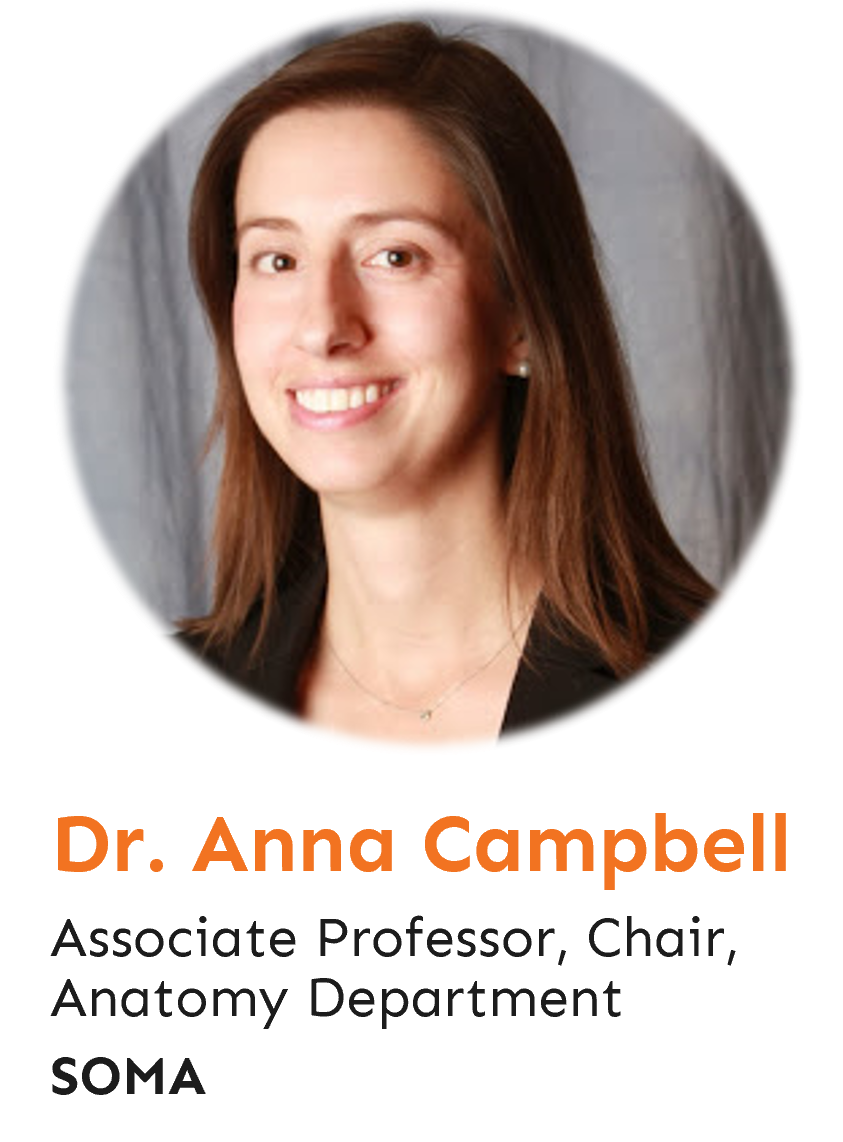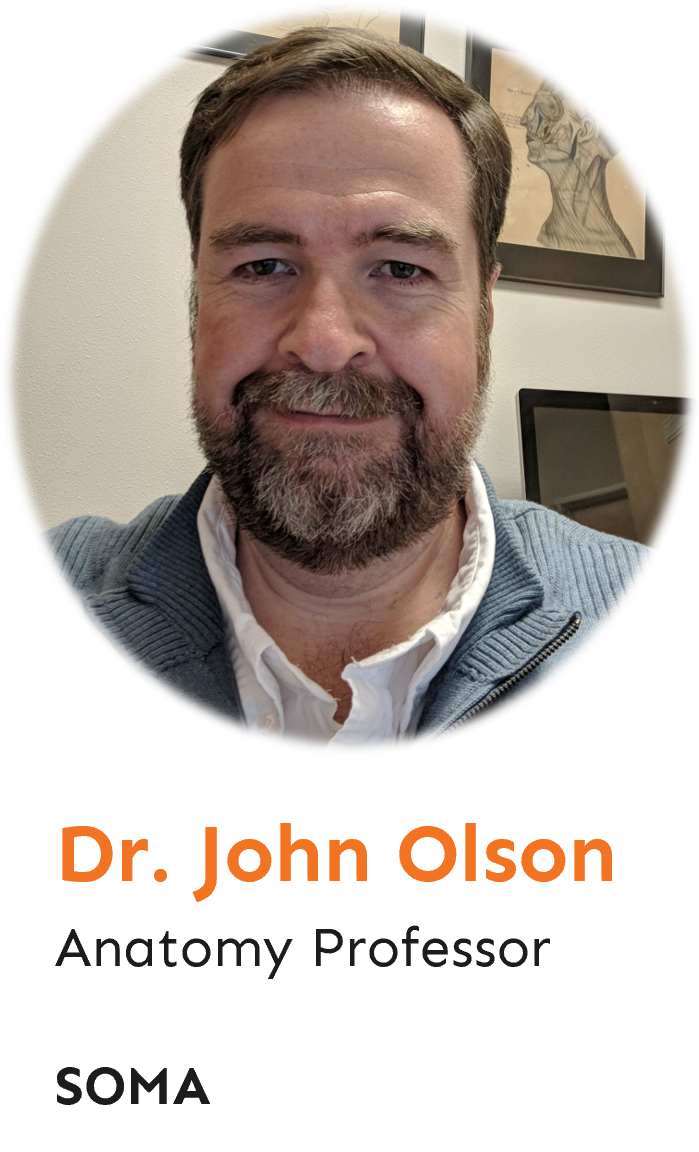Partner Story: A.T. Still University of Health Sciences
ATSU School of Osteopathic Medicine in Arizona
Founded in 1892 as the world's first osteopathic medical school, A.T. Still University (ATSU) has consistently prioritized innovative learning to cultivate highly skilled professionals. The School of Osteopathic Medicine in Arizona (SOMA) exemplifies this commitment, embracing revolutionary teaching techniques to prepare the next generation of osteopathic physicians. Their pursuit of an interactive, collaborative approach to 3D anatomy learning culminated in adopting the HoloAnatomy® learning platform.
Nancy Farrow, MBA/MHCA (AlensiaXR SVP Marketing and Global Business Development) worked closely with Anna Campbell, Ph.D. (Associate Professor, Chair, Anatomy Department, SOMA) and John Olson, Ph.D. (Anatomy Professor, SOMA) to help them revolutionize anatomy instruction at SOMA. They sat down to reflect on their journey….
Nancy Farrow, MBA/MHCA, AlensiaXR SVP Marketing and Business Development
Describe your initial experience of HoloAnatomy software—what stood out for you?
Anna Campbell, Ph.D., Associate Professor, Chair, Anatomy Department
We have a traditional wet lab, and we’ve tried different solutions for displaying anatomical structures. The missing piece for me was always that I wanted students to be able to move around the anatomy—to be able to see smaller structures in a holographic model and move around the body as you would move around a patient. For me, that was a very compelling piece of the HoloAnatomy offering. Also, the anatomical accuracy and level of detail checked a lot of boxes for choosing which new technology to bring to ATSU.
Nancy Farrow
What was the HoloAnatomy classroom experience like?
Anna Campbell
It brought back an excitement we can all relate to—that first-day-of-school excitement, that kind of fluttery feeling in your chest when you're excited to embark on a new adventure. When students first experience HoloAnatomy, you can feel the electricity in the room as they're buzzing and talking to each other, whipping out their phones because they want to share the experience. It’s fun and joyful, and that's what I want for my students. They're going to look back and say, ”That was one of the best times of my life.” And professors feed off those feelings of excitement.
“When students first experience HoloAnatomy, you can feel the electricity in the room.”
John Olson, Ph.D., Anatomy Professor
Other solutions we’ve tried involved the teacher running everything and the student just sitting there, passive—a good way to show anatomy but a bad way of lecturing. What sold me on HoloAnatomy was that students could approach the model, interact with it, and see what was happening inside the hologram.
Nancy Farrow
Have you seen student engagement increase as a result of incorporating HoloAnatomy in your curricula?
Anna Campbell
Absolutely. And that's something I point out to other faculty at our institution. One of the most exciting parts of implementing this technology has been to observe student engagement increase. They're drawn in because they're working collaboratively to explore these models. They gather around the model and interact with each other, sharing points of discussion and discovery as they learn to apply foundational knowledge to clinical scenarios. It brings me a lot of joy as an instructor to observe because I know the value that brings in terms of the learning experience—the more engaged your learner is, there's lots of evidence that the result is meaningful for learning outcomes. So, we're paying attention to that engagement and actively finding ways to foster it as students use this technology throughout their experience here.
John Olson
When students are working with cadavers—which are the gold standard for anatomy—there’s still a significant number of limitations and some students feel some reluctance about interacting with the specimens. But when you see them interacting with a HoloAnatomy model, they're laughing and talking with each other. It's much more lighthearted, and they're much more involved.
Nancy Farrow
That's a great point. Can you describe the role HoloAnatomy has played in developing your students’ understanding of human anatomy?
Anna Campbell
In a way, HoloAnatomy is like the Google Maps of the human body that allows you to get the lay of the land in a meaningful way. You have a mental map. It helps if you understand the branching of the arteries and nerves before you try to sort those out on a cadaver. For us, it's an essential step in the learning process. They have these Eureka! moments when they see the material we’re studying in three dimensions. They develop a stronger understanding of what they're looking for in the wet lab environment because they've had the HoloAnatomy experience. They see how these structures connect to each other, so it's been a very effective tool for our students. They often return to HoloAnatomy to reformulate what they saw in the lab. Students want to see clearly and better understand.
“HoloAnatomy is like the Google Maps
of the human body.”
Nancy Farrow
Which HoloAnatomy elements do your students find most engaging?
John Olson
When they interact with the model and get a three-dimensional view of what's going on. [Unlike in the cadaver lab], they don't have to physically work really hard to peel the layers of muscles off or try to move a heavy cadaver around. It's much easier for them to interact with a holographic model than a plastic model or cadaver if you want to investigate something specific.
Nancy Farrow
What elements of HoloAnatomy do faculty find most engaging?
Anna Campbell
It's hugely important because a lot of our curriculum content requires that we customize what we're showing to students. Being able to customize and label models, highlight structures, and provide students with exercises to test their knowledge is super meaningful to instructors. Also, the ability to customize exactly what we’re showing and how we’re showing it, being able to magnify models when we're looking at more detailed structures that are smaller and harder to appreciate—all those tools are things that we’re using extensively and are very important for us.
John Olson
Another major component is content permanence. Anatomists deal with the least permanent materials compared to any other field out there. A cadaver offers only so much utility. When done, the body must be cremated and a new one obtained. It's very ephemeral. But by making these [HoloAnatomy] modules, it gives you something to build on, year after year. You take what you have and make it better the next time, and that's a major component—something cadavers can't do.
Nancy Farrow
How do you describe HoloAnatomy to friends and family around the dinner table?
John Olson
I have a HoloLens at home for development purposes, and when someone comes over for dinner, I slap it on their head, and when they see the hologram for the first time, it's always shocking. I've yet to see someone whose jaw didn't drop to the floor. There's no good way to describe what you're looking at—it's like a fish trying to describe how a bird flies.
Anna Campbell
The closest I get is saying, “Remember [in Star Wars] when Princess Leia pops out and starts talking? It's like that, except anatomy.” It feels very futuristic. You get to walk around a holograph. When I tried to convince our administration that HoloAnatomy was a worthwhile investment, it ultimately took putting a device on their heads. The lightbulbs would go off, and they’d say, “Oh! Now I see. Yes, this is compelling.” There's just nothing that replaces that first-hand experience.
John Olson
The first time you put on a HoloLens, the effect is not the same a month later. It just becomes natural. You don't even think about it. It gets better with time, and very few things get better with time—besides wine.
“It gets better with time, and there are very few things that get better with time—besides wine.”
Nancy Farrow
What elements have been most important to you in terms of deciding to incorporate the HoloAnatomy learning platform into your curricula?
Anna Campbell
AlensiaXR customer support is a huge factor. I've had experiences across the gamut with different products we’ve purchased, and if there isn’t the support component, I will pass. So having direct channels to provide meaningful feedback and get the help we need—especially with technology—that's key. Having a community to share ideas is exciting. Rarely do I have an idea that's not inspired by somebody else's creativity. And at the end of the day, customer support can absolutely make or break a product. We've been very happy so far. Thank you, Nancy, for all your efforts along the way!
Nancy Farrow
You're welcome. My pleasure. How do you think adopting HoloAnatomy has influenced the reputation of your university?
Anna Campbell
It is definitely gaining us attention. We've been asked to include a HoloAnatomy demonstration on interview days when potential applicants come touring. It has also gained interest as part of our university’s strategic plan. The word is getting out within our institution regarding the PR component because there is excitement about it and positive feedback from students. Not all medical schools offer this technology, and we are interested in things that make us distinct—especially implementing innovative technologies to enhance the learning experience.
Nancy Farrow
That's wonderful to hear. Do you think other programs on your multiple campuses could benefit from HoloAnatomy?
Anna Campbell
I think they could. We've had preliminary conversations with colleagues at various programs in Mesa—the medical school is just one of many programs on this campus. We have a dental school, athletic training, and a whole gamut of health sciences programs. Each of those programs has its unique take on anatomy curricula. There's a spectrum of people who are early adopters of exciting new ideas and others who want to see it in use for a while. We've always been early adopters of technology to support our innovative model. It's part of our culture here.
“Not all medical schools offer this technology, and we are interested in things that make us distinct—especially implementing innovative technologies to enhance learning.”
Nancy Farrow
Tell me about the learning curve for creating HoloAnatomy content.
Anna Campbell
I think it’s easy and intuitive. For me, the learning curve was not too steep. I've been working this morning on an upcoming lab, and I build the models very easily. The hard part is making sure I'm thoughtful about framing the content. However, creating HoloAnatomy slides is straightforward and easy. I could teach just about anybody how to do it.
Nancy Farrow
Last question: When you introduced HoloAnatomy to your students, what was the feeling in the room?
Anna Campbell
We feed off students’ excitement, and they were just oohing and ahhing. We had described HoloAnatomy to students. Of course, it’s not the same as putting the device on your head for the first time and seeing the models pop up in the room and being able to walk around them. We have this new space where we run lab sessions, a big open room with glass doors, and people walking by could witness the excitement of our students. It's a lot of fun. Our Dean came in and walked around and got to experience it. The HoloAnatomy experience creates a lot of joy and excitement at ATSU.




